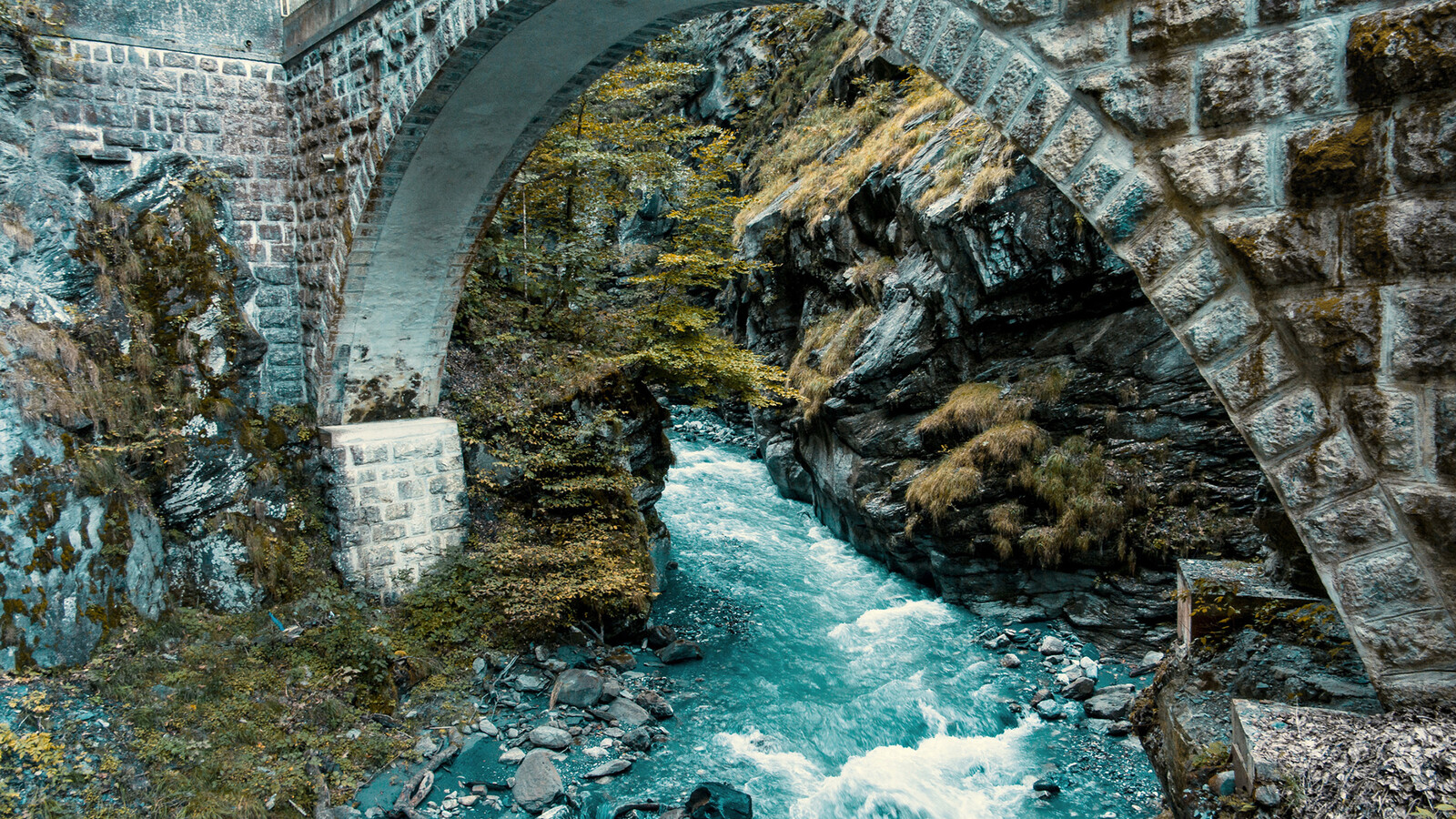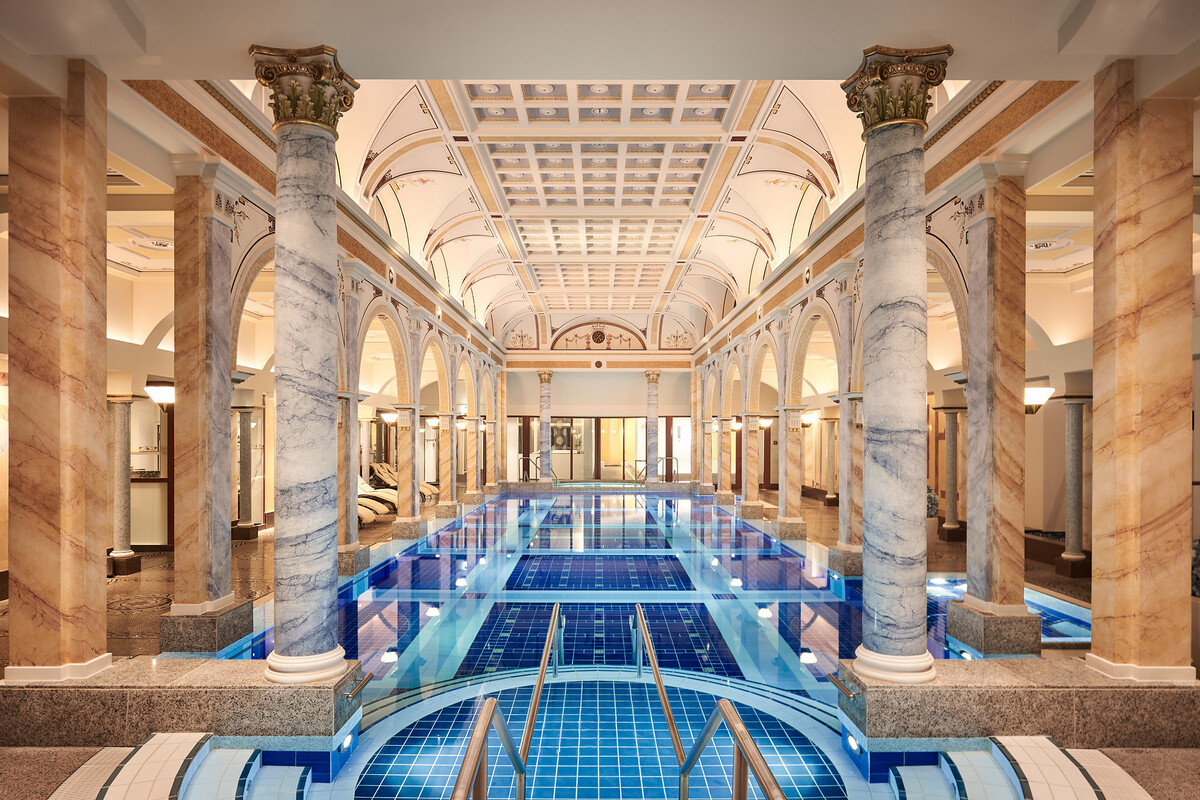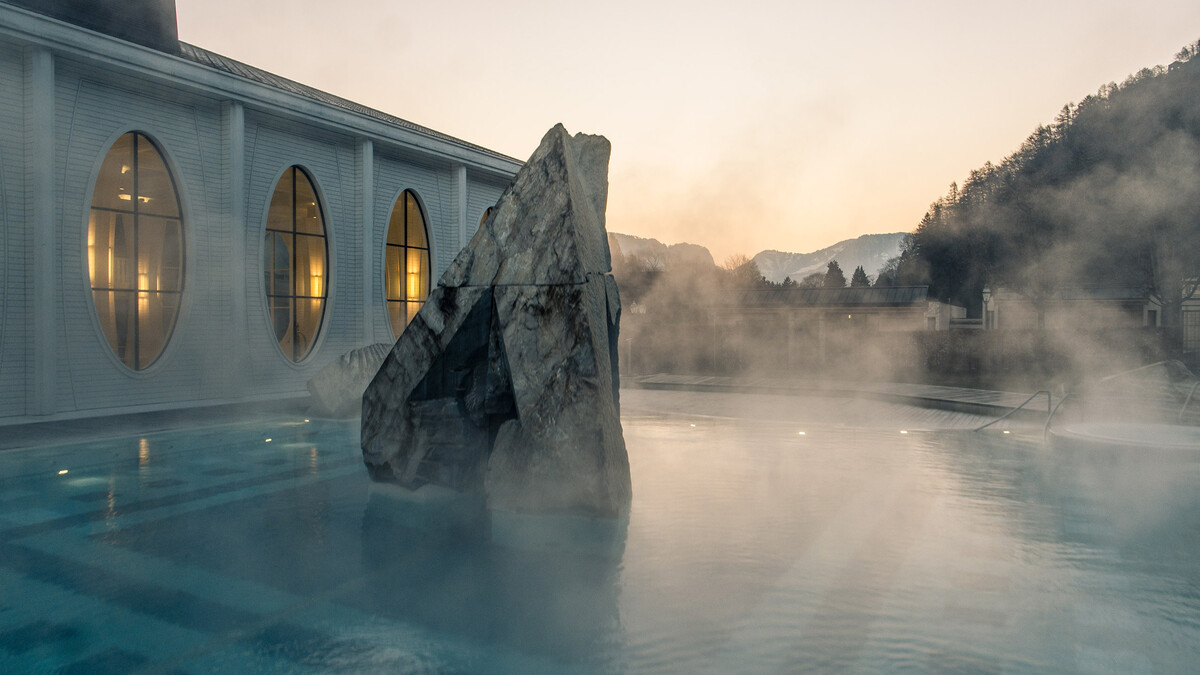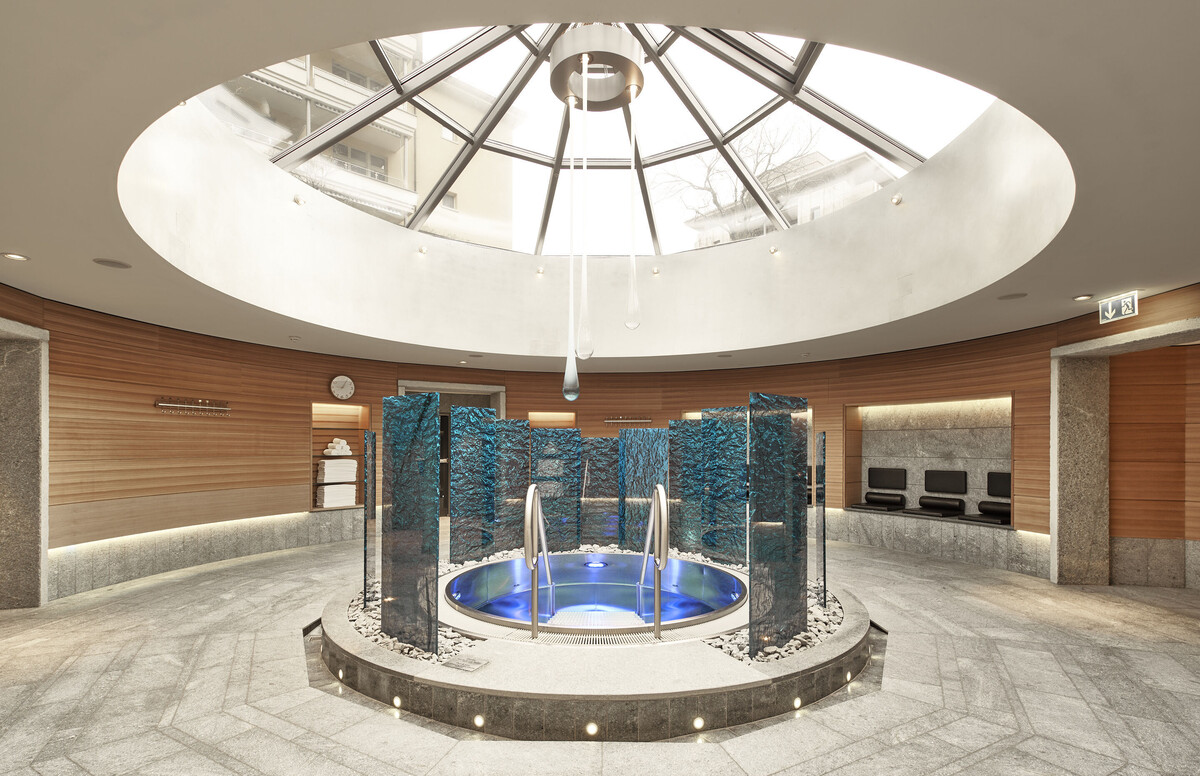Thermal water is a precious gift of nature – unique in effect and rare in composition.
The iconic thermal spring in the Tamina Gorge has been a source of healing thermal water for centuries, and is why we are able to offer our unique health and spa services. The special mineral composition and the temperature of 36.5°C trigger positive reactions throughout the body. This stimulates the metabolism and blood circulation, and improves heart function. The thermal water also has a soothing effect on rheumatic conditions and nervous system diseases, as well as lung and kidney disorders.
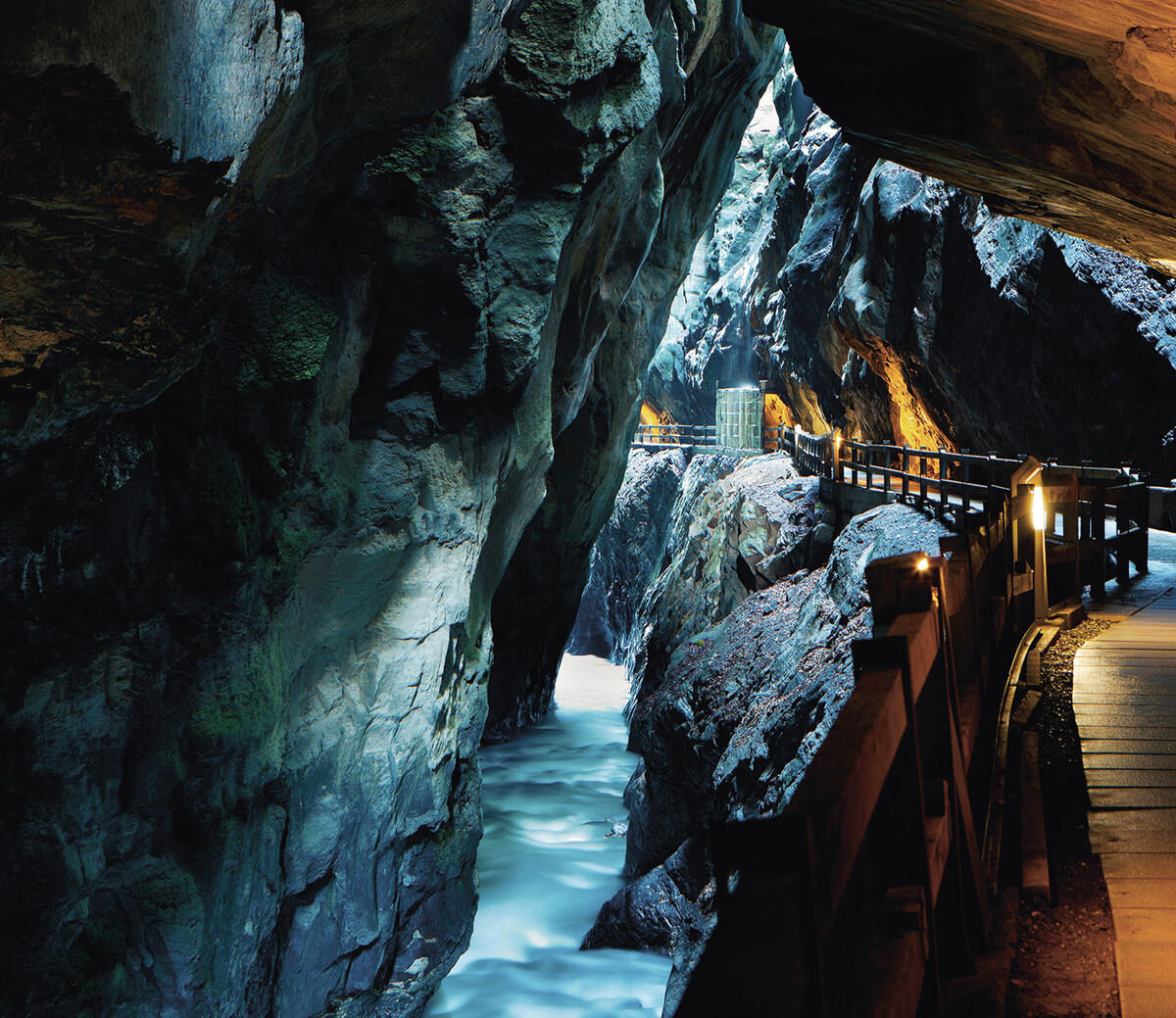
The discovery of Tamina’s thermal water
Thermal water has been gushing through the Tamina Gorge, which is located near the resort, for thousands of years. The hot spring was discovered by Benedictine monks in 1242, who quickly recognised the water’s healing effects. However, accessing the gorge was no easy feat. The very first guests had to be lowered down 70 metres in baskets, which was a hair-raising undertaking. Wealthier visitors were lowered using a litter.
From 1350 onwards, wooden bathing houses were built across the gorge. After the doctor and alchemist Paracelsus wrote of the water’s power in one of his works in the 16th century, hordes of people made the pilgrimage to Tamina in search of the healing water. The thermal water has flowed through a four-kilometre-long pipeline directly to Bad Ragaz since 1840. This laid the foundations for the area’s global reputation as an exceptional spa and health resort.
Therapeutic effects and spring analysis
Based on its composition, the local Bad Ragaz spa water belongs to the main group of chloride-hydrogen carbonate-sulphate waters. In addition to these principal components, it also contains trace elements such as iron, fluoride and iodide ions, as well as sulphide sulphur. The spring is classified as an acratotherm or hot spring (< 1000 mg/l mineral content, temperature > 20°C) and has proved its worth in treating complaints of the locomotor system and diseases of the musculoskeletal system.
Immersion in water in effect provides a transformed physical environment for the body. The physical properties of the water include the water pressure, buoyancy, water density and thermal conditions.
These bring about a whole host of positive effects pertaining to the heart, lungs, kidneys, circulation, motor system and even hormones. The most important effects on our body:
- A reduction of vasoconstriction (narrowing of the blood vessels) in the legs (30%)
- An increase in circulation (30%)
- An improved use of the exchange surface of the lungs (pulmonary circulation and ventilation)
- A reduction of blood pressure
- An improvement of cardiac function (stroke volume and cardiac output increase by about 25%
Time in the water reduces muscle tension and loosens connective tissue. Non-rheumatoid pain is alleviated and mobility in relation to the spine and extremities is improved.
The warmth has positive effects on the locomotor system and our ability to relax. At this “comfort temperature“, the body neither has to produce heat nor release excess heat. Our body temperature therefore remains constant.
The water helps alleviate
- Joint and spine conditions
- Posture and movement disorders
- Rehabilitation after operations of the locomotor system
- Disorders of the vegetative-hormonal system

